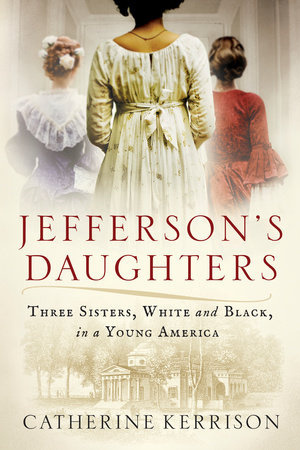Founding Father Thomas Jefferson had three daughters who survived to adulthood. Two were white – Martha and Maria, his daughters by wife Martha Wayles Jefferson. One was black – Harriet Hemings, daughter of Sally Hemings, Jefferson’s slave and lifelong consort. In “Jefferson’s Daughters: Three Sisters, White and Black, in a Young America,” Catherine Kerrison, a history professor at Villanova University, aims to tell the stories of all three women using books, historical records, diaries and letters to re-create their lives, all extraordinary by any measure.
Martha Jefferson Randolph, the eldest, inherited her father’s lively intellect and thirst for knowledge. An avid reader, writer and teacher, she spent her early years accompanying Jefferson from Virginia to Paris to Philadelphia and back to Virginia, encountering the brightest minds on both sides of the Atlantic. Once she achieved adulthood, Martha largely set aside intellectual pursuits to help Jefferson run his complicated life – after marrying she moved to Monticello, where her husband managed the estate. Martha oversaw Jefferson’s extensive household while raising and homeschooling her children (she had 12) and served as first lady during visits to Jefferson in the White House.
After her mother died at age 33, Maria Jefferson Eppes accompanied her father as he traveled colonial America: “Eighteenth-century children had no control over their lives, but the lack of stability in young Maria’s was staggering,” Kerrison writes. Eventually she landed in the care of a loving aunt, but once Jefferson settled in Paris, he sent for her. Maria stubbornly resisted joining him. Determined to stay in Virginia, she had to be tricked into boarding the boat that would take her across the ocean. She was 9, and her sole companion was Sally Hemings – at 14 practically a child herself. Maria would die young herself, at 25.
Little is known about Harriet Hemings. Described as “very beautiful” by Jefferson’s overseer, she labored in Jefferson’s cloth-making workshop at Monticello. In Paris, Jefferson had promised Sally Hemings that he would eventually free their children if she remained with him as a slave. Jefferson fulfilled his promise and eventually released Harriet, who disappeared into the city of Washington, D.C. Seven-eighths white, she “passed” successfully and left no trace of herself behind.
“Jefferson’s Daughters” is a striking portrait of how women in Jefferson’s era lived, bravely and resourcefully, in an age that demanded fealty and absolute obedience to men.
Copy the Story LinkSend questions/comments to the editors.



Success. Please wait for the page to reload. If the page does not reload within 5 seconds, please refresh the page.
Enter your email and password to access comments.
Hi, to comment on stories you must . This profile is in addition to your subscription and website login.
Already have a commenting profile? .
Invalid username/password.
Please check your email to confirm and complete your registration.
Only subscribers are eligible to post comments. Please subscribe or login first for digital access. Here’s why.
Use the form below to reset your password. When you've submitted your account email, we will send an email with a reset code.